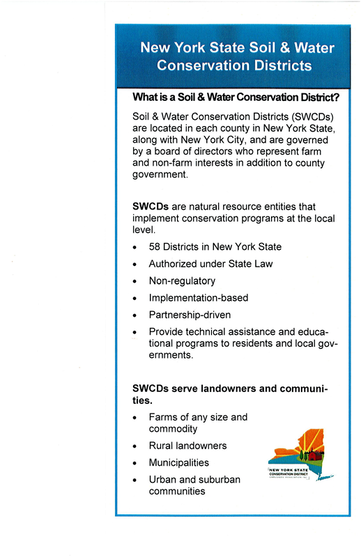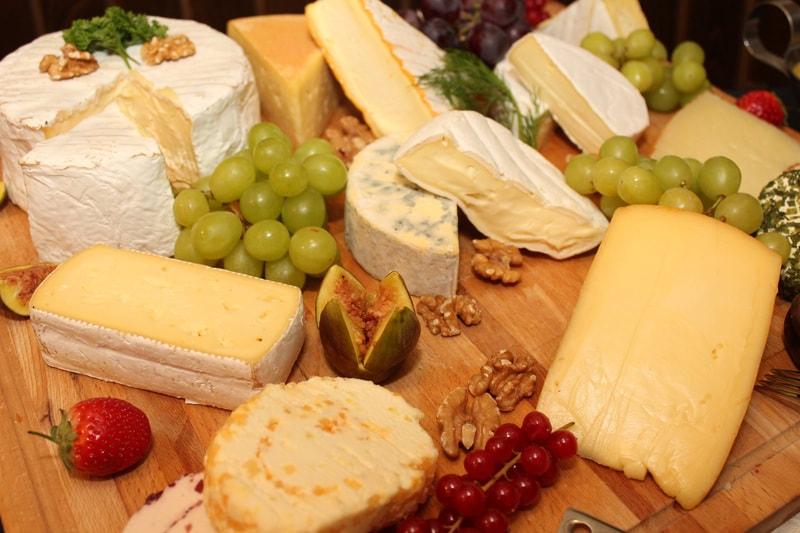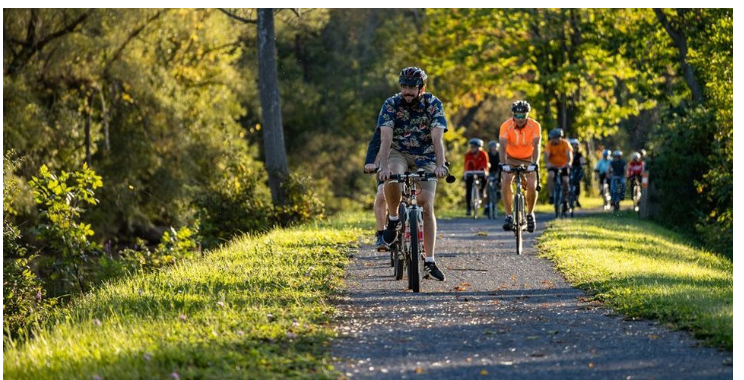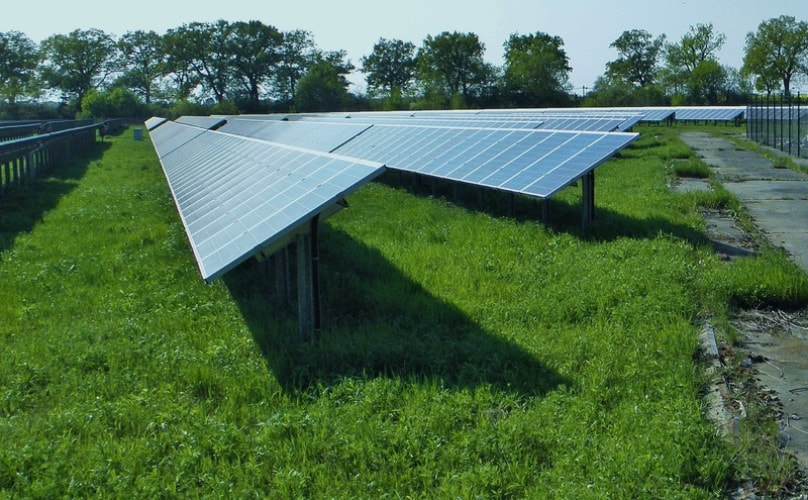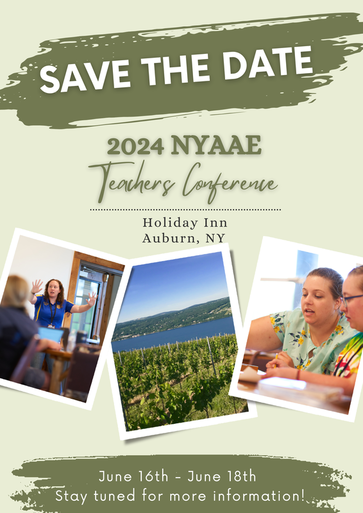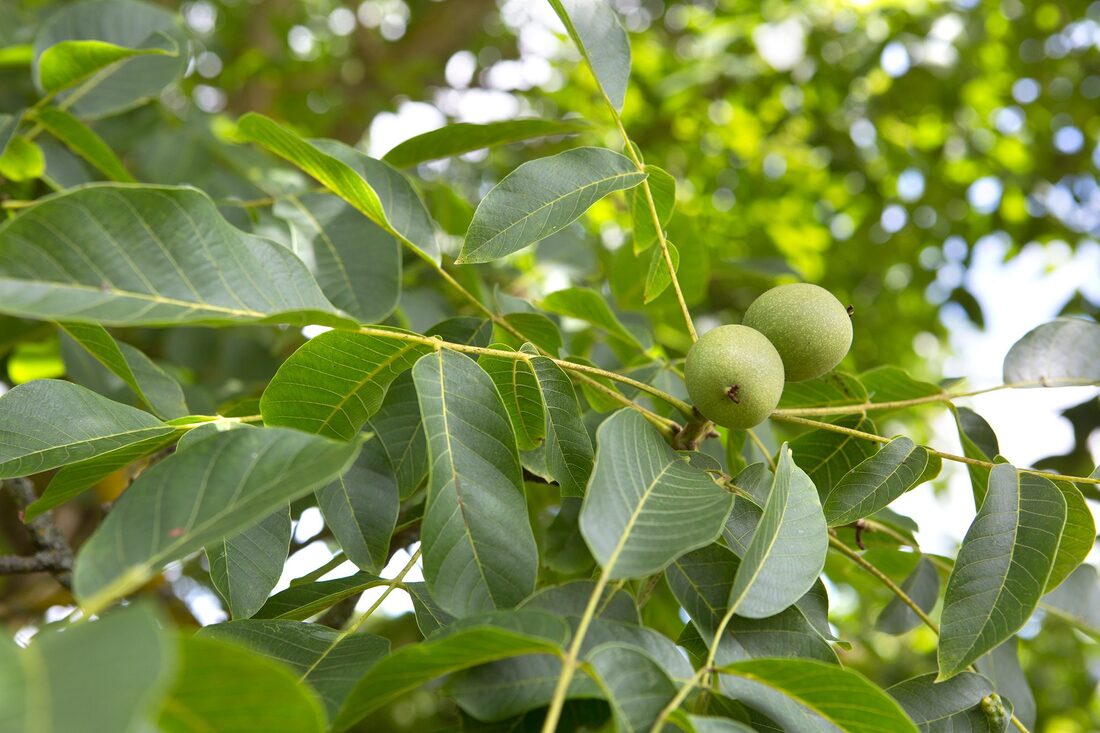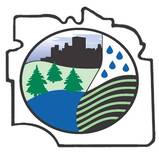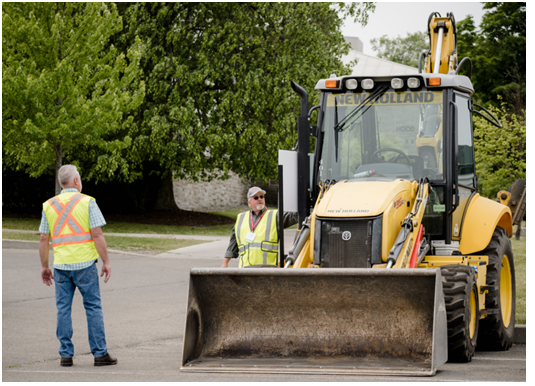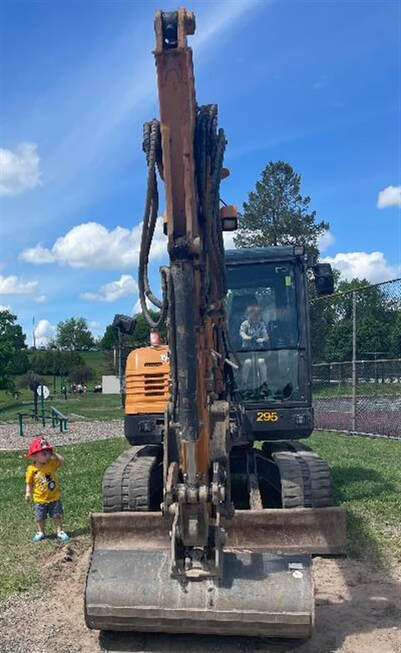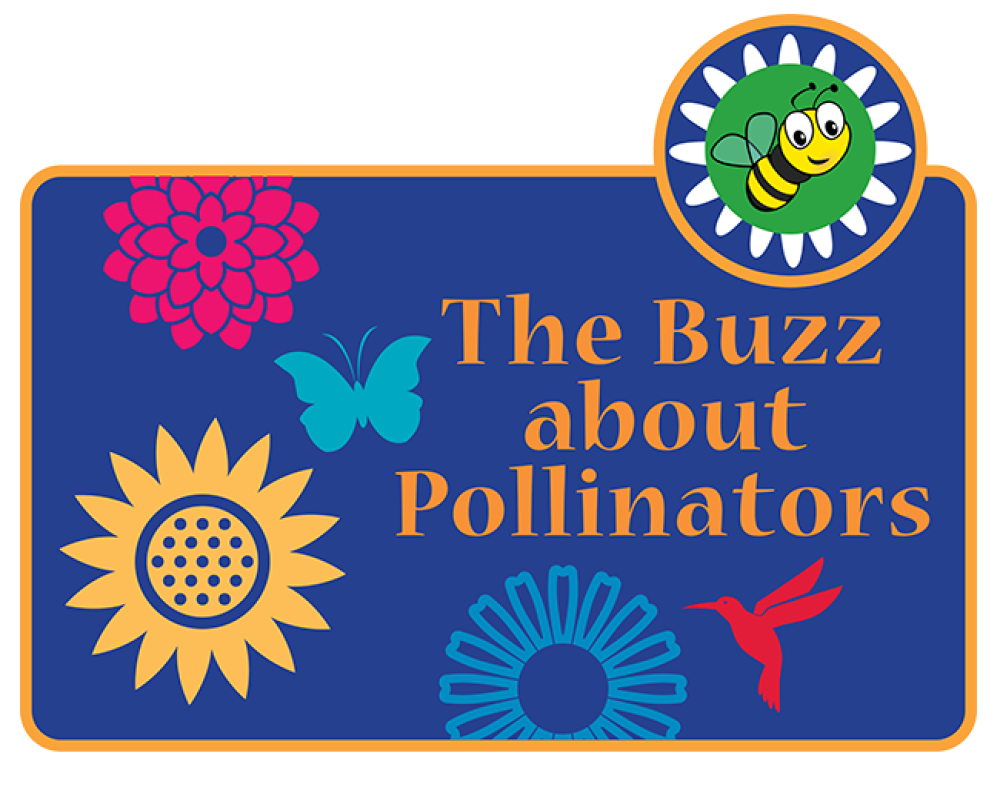|
Photo Courtesy of Wells Horton, Sherburne NY
WELCOME!
ABOUT SOIL AND WATER CONSERVATION Please Note: The Office Will Be Closed in Observance of the Following Holidays in 2024
New Year's MONDAY, JANUARY 1 Martin Luther King Day MONDAY, JANUARY 15 Presidents' Day MONDAY, FEBRUARY 19 Memorial Day MONDAY, MAY 27 Juneteenth WEDNESDAY, JUNE 19 4th of July THURSDAY, JULY 4 Labor Day MONDAY, SEPTEMBER 2 Columbus Day MONDAY, OCTOBER 14 Veterans Day MONDAY NOVEMBER 11 Thanksgiving THURSDAY,NOV. 28 Day after Thanksgiving FRIDAY, NOVEMBER 29 Christmas WEDNESDAY, DEC. 25 Please note that this is a general informational website. If you have specific questions regarding the watershed, please feel free to email info@ocswcd.org and we will do our best to respond to your inquiry. Oneida Lake WalleyeFest Derby The festivities kick off with a Friday night pre-party on, May 3rd, at 5pm at the Brewerton Speedway from 6pm 11pm with a sponsor boat parade during intermission of the race. Fireworks provided by WalleyeFest immediately after the race and before the derby starts at midnight. The excitement continues into Saturday, May 4th, and Sunday, May 5th, with the derby festivities carrying on until noon on Sunday. Weigh-ins will be held promptly at noon, followed by an award ceremony at 1:00pm. ONEIDA SHORES PARK 9400 Bartell Road Brewerton, NY 13029 Ag Museum Launching 1st Annual Cayuga County Cheese Fest By Ed Vivenzio A new food-themed festival is coming to Cayuga County next month. Ward O’Hara Agricultural Museum will host the first annual Cayuga County Cheese Festival. The event will see local cheese makers give demonstrations on the cheese-making process and offer free samples. Products will also be on hand for purchase. There will also be free Model T and horse and wagon rides as well as live music and kids activities. Admission and parking are free for the day-long event. The Cheese Festival debuts May 4 at the museum located at 6880 NY-38A, Auburn. From Hoard's Dairyman STRENGTHENING YOGURT'S WELLNESS HALO By Dana Engel We now have another way of communicating yogurt’s health benefits to consumers. On March 1, the U.S. Food and Drug Administration (FDA) announced the first-ever qualified health claim for yogurt that identifies a potential link between its consumption and a reduced risk of type 2 diabetes. Danone North America submitted the claim in 2018. The farmer-funded National Dairy Council (NDC) and others provided public comments during the open docket period. This included science-based evidence on yogurt’s positive link to the reduced risk of type 2 diabetes, a disease we have long examined through our research. Diabetes affects more than 38 million Americans, raises the risk for early death and health-related complications, and can lower quality of life. Most Americans living with diabetes have type 2 diabetes, and there’s a growing trend of prevalence among younger Americans. Research-backed Only foods produced with real dairy are permitted to use this health claim as determined by the FDA’s standard of identity for yogurt. The claim identifies yogurt’s benefit as a whole food rather than singling out an individual nutrient or compound. It also applies to all styles of yogurt, regardless of fat or sugar content. Qualified health claims were initiated by the FDA in 2003 as a part of the Consumer Health Information for Better Nutrition Initiative. They are supported by scientific evidence but do not meet the more rigorous scientific evidence needed to support an “authorized” health claim. The FDA enforces specific language to reflect the limitations of the claim’s scientific evidence. Yogurt companies are allowed to use one of these two statements:
TRAIL AMBASSADOR INFORMATIONAL MEETING Do you love CNY as well as biking or hiking the Erie Canalway Trail and want to share that passion? You could be a perfect candidate for becoming a Trail Ambassador! Trail Ambassadors assist and inform trail users, monitor trail conditions, promote trail courtesy, safety and awareness, and serve as local advocates for the Canal’s trail systems. This program relies on volunteer Ambassadors to visit the trail on their schedule and essentially be our “eyes and ears” of trail while they are there. By being part of this program you will be part of improving this trail system even more! Please join us at the Liz and Dave Beebe Camillus Canal Park to learn more. An additional information meeting with be held on May 2 at the Erie Canal Museum in Syracuse. 6:00PM Email educator@eriecanalmuseum.org if you have questions. 5750 Devoe Road,Camillus THE BLUE AND GOLD: It has faded a bit and is a rather tight fit, but I still keep my FFA jacket in my closet.
From Farm Progress By Gil Gullickson How FFA influenced my career It’s the main reason I now sit in the editor’s chair of the Wallaces Farmer. Sometimes, the present takes you down a pleasant ride into the past. That was the case last week, when I attended the Iowa FFA Leadership Conference in Ames. Wallaces Farmer is an Iowa FFA Foundation donor and presented the “Reporters Scrapbook” at the conference. I distantly followed FFA in previous career positions, but this year marked the first time I’d attended FFA events in years. In February, my wife and I attended the 11th Black Ties Blue Jackets Gala in Ankeny. Listening to Holly Schmitt, 2023-2024 Iowa FFA president (and the granddaughter of 2024 Iowa Master Farmers Mark and Diane Schmitt) call the meeting to order spurred me to flash back to my own time as president of the Langford, South Dakota, chapter. A local farmer, Pete Waletich, had long lobbied the local school board to start a vocational agriculture and FFA program. It finally did my senior year. I immediately devoured all the offerings of the program. We learned about crops, livestock, public speaking, parliamentary procedure — the list went on and on! Our teacher, Floyd Lehman, gelled well with my FFA buddies. He knew the area well, for he married a Langford graduate who was friends with two of my older cousins. We each had a proficiency project for that year. Mine was raising 20 acres of wheat on my family’s farm. I’d helped during harvest with tasks such as driving trucks and shoveling wheat, but I had never planted. I skipped a day of school in April to plant wheat, with my dad at my side to answer questions. After a couple of rounds, I got the hang of when to engage the plow and make sure wheat was coming out of the drill. I remember that day more than any other of my time in high school. That single year of FFA also inspired me to pursue an agricultural education at South Dakota State University and eventually end up at Wallaces Farmer as editor. In fact, the wheat check later that year helped me pay for that first year at South Dakota State University. Changing Times Much has changed with FFA since my high school days. Nary a female made up FFA chapters back then. Now, thankfully, young women are a vital part of vo-ag programs and FFA. FFA isn’t just farm centric anymore, either. It’s reached out to students in urban and suburban areas. Even Dowling Catholic in West Des Moines — as suburban as you get — has an FFA chapter. I had a good visit with Joshua Remington, executive director of the Iowa FFA Foundation. In Iowa, FFA is rocking, as membership has swelled to 19,249 FFA members from 260 chapters. Still, not all is rainbows and puppy dogs. The National Association of Agricultural Educators has noted mounting losses of ag educators since 2015. Iowa alone has lost 204 agricultural educators to retirement and other pursuits. Almost one-half of net instructor losses have occurred within the past two years. The teacher shortfall limits opportunities for future agricultural leaders. To address this shortage, the Iowa Farm Bureau Federation has pledged $1 million to the Iowa FFA, with a portion dedicated to its “All in for Ag Education” strategic initiative. Besides recruiting, training and retaining agricultural educators, the initiative aims to bring access to ag education to 100% of Iowa high school students by 2029. Who knows what exciting new technologies and strategies FFA students will bring in the future? With initiatives such as the “All in for Ag Education” aimed at developing the next generation of agriculture leaders, I can’t wait. 99TH STATE CONVENTION MAY 2-4, 2024 - BUFFALO NY The New York State FFA Convention is scheduled to take place from May 2nd to May 4th, 2024! We are looking forward to gathering in-person at the Buffalo Niagara Convention Center and welcoming over 2,000 FFA members, advisors and honored guests from across the state to hear from inspiring speakers, peers and agricultural professionals. State Convention offers you the opportunity to expand your knowledge during workshops and tours by exploring different fields in the agriculture industry and networking with agricultural business professionals and colleges during the Career Engagement Expo. State Convention is the state finals for 30 of our Career and Leadership Development Events (CDEs and LDEs). Students will test their knowledge and skills against others at the same competitive level and have the opportunity to take part in any number events or watch, learn, and observe as others compete by demonstrating their talents, aptitudes and abilities. Many of the CDE/LDE's serve as qualifiers to the National FFA Convention. This event also gives us the opportunity to recognize our members, advisors and avid supporters throughout our week long convention. This culminating event, allows everyone to appreciate the hard work and dedication that our members, advisors and supporters invest in the future leaders of our communities. Please Note: This is an image. Links are not live.
Cayuga Receives Proposal for 23-Acre Solar Farm By Ed Vivenzio Could Cayuga County soon see more solar panels?The Village of Cayuga has received a proposal from New Energy Equity for a 23-acre solar farm to be constructed just east of the former water tower. Spanning the land between Genesee Street and Cayuga Road, the Tier 3 facility would produce an estimated 3.66MW of AC electricity. Speaking on FLX Morning, Mayor Don Wilson Jr said the plan is in its infancy and, as such, it’s too early to tell whether or not it will happen. “It’s another thing that’s really in its infancy stages and there’s a lot that needs to be done with open-to-the-public meetings, the neighboring property owners need to be notified and they have to have their time before the planning board as well,” said Wilson. “so we won’t see anything on that for a couple of months before that gets hashed out whether it moves forward or not.” The land is currently zoned for agricultural/residential use. Wilson added that it was hoped in the village’s comprehensive plan that the land would be used for more residential housing. Developers are scheduled to meet with the village’s planning board on May 14 at 7:00p. At the meeting Wilson said they’ll have to discuss if the project can be modified to meet local criteria. “According to our code enforcement officer and our village local law, this Tier 3 program that they’re planning on putting in, it actually doesn’t meet our local laws,” he continued. “So, there’s going to be some back and forth with the developer to meet our criteria, if they do make our criteria for that matter. The village will update residents as the plan progresses and is encouraging residents to speak up during calls for public input. The goal of the annual professional development conference is to enhance the quality of instructional programs for secondary agricultural educators through in-service education with activity based workshops that address the needs of our constantly changing agricultural and agriscience programs. Virtual sessions are designed to both raise the scientific rigor of agricultural courses and provide middle, high, and postsecondary educators with new technologies and resources for their classrooms. This high-quality professional development opportunity meets the Continuing Teacher and Leader Education (CTLE) criteria pursuant to Section 80-6 of the Regulations of the Commissioner of Education. By attending this conference each teacher will receive up to 28 professional development hours. This conference has something for everyone! We are looking forward to seeing each of you in June! ALL PAYMENTS SHOULD BE MADE OUT TO:NYAAE300 KENNEDY HALLCORNELL UNIVERSITYITHACA, NY 14853 ELECTRONIC RECYCLING EVENT Assemblyman Magnarelli's annual electronics recycling event has been scheduled for Saturday, May 18th, 2024 from 8:30am to 12pm at the Pink Lot at Destiny USA, entrance off of Solar Street (1 Destiny USA Dr, Syracuse, NY 13204). The link for registering for the event and to schedule a drop-off time is now live! Please click the link below to sign up and we will see you there! https://www.sunnking.com/events/destiny-usa-05-18-24 Northern Nut Growers Association Meeting
U.S. EPA and DEC Launch Statewide Environmental Justice Listening Tour Meetings Advance Community Conversations and Engagement around Federal and New York State Environmental Justice Programs First Listening Session Scheduled for April 15 in Niagara Falls The U.S. Environmental Protection Agency (EPA) and New York State Department of Environmental Conservation (DEC) today announced a series of Environmental Justice listening sessions to support and enhance meaningful engagement with communities with environmental justice concerns. The events support DEC and EPA’s ongoing efforts to promote and enhance existing state and federal Environmental Justice programs to better serve the community, build relationships between the agencies and community members, and help prioritize future outreach efforts for public participation. “New York State is making significant progress to address longstanding environmental issues affecting disadvantaged communities, but more work must be done to advance DEC’s environmental justice objectives to improve the health and wellbeing of marginalized New Yorkers,” DEC Commissioner Basil Seggos said. “DEC is proud to partner with the U.S. Environmental Protection Agency to launch this listening tour and hear directly from Indigenous Nations and communities disproportionately impacted by environmental pollution and climate change, particularly greenhouse gas emissions and air pollution.” “Communities speak for themselves, and EPA is here to listen. We are honored to kick off our EJ Listening Tour in Western New York with DEC to better understand the unique challenges and aspirations of communities affected by the cumulative impacts of legacy pollution, climate change, and historic disinvestment,” Regional EPA Administrator Lisa F. Garcia said. “Our goal is to establish stronger relationships with community leaders and people potentially affected by environmental pollution to promote meaningful engagement.” The listening sessions are jointly organized by EPA Region 2 and DEC’s Offices of Environmental Justice and Indian Nation Affairs. The first meeting will be held on April 15 at the Niagara Arts and Cultural Center, 1201 Pine Avenue, Niagara Falls. Doors open at 5 p.m. and participants can attend any time between 5 to 7:30 p.m. to participate in an informal and interactive open house with EPA and DEC technical experts. There will be a formal presentation and brief remarks by DEC and EPA leadership at 6 p.m., with opportunities for attendees to provide input throughout the evening. Participants will be able to engage with staff from both agencies to provide comments and feedback on environmental issues in their neighborhoods during the listening session. DEC and EPA will also have information on grant and technical assistance opportunities available. Future sessions are planned statewide and will be announced throughout 2024 and 2025. DEC’s Office of Environmental Justice works to address environmental issues and concerns that affect primarily low-income and minority communities through grant opportunities, enforcement of environmental laws and regulations, consultation, guidance, and enhanced public participation. For more information on DEC’s Office of Environmental Justice, visit the DEC website. DEC’s Office of Indian Nation Affairs works to address environmental concerns, cultural resources, and advance shared knowledge through consultation with State and Federally recognized Indian Nations. To learn more, visit the DEC website. In Case of EmergencyIn case assistance is needed at an agricultural spill, and it's after office hours (4:30 p.m.) you can call Mark Burger directly at 315-415-5057.
|
Onondaga County Soil & Water
|
Our mission is to promote excellence in the wise use of our rural/urban natural resources.
Our vision is to live in a society in which future generations will have natural resources necessary to sustain and enrich their quality of life.
The Onondaga County Soil & Water Conservation District prohibits discrimination in all its programs and activities on the basis of race, color, national origin, gender, religion, age, disability, political beliefs, sexual orientation, and marital or family status.
